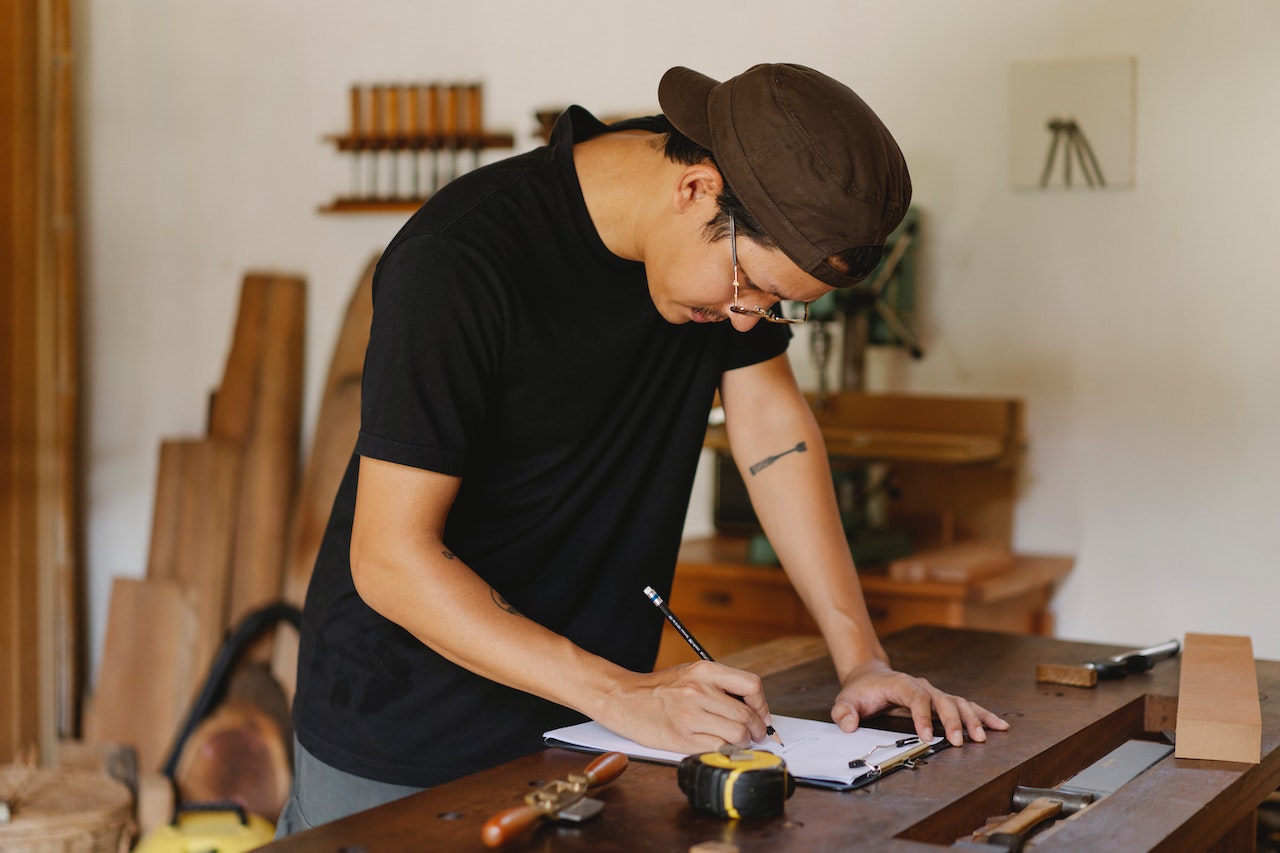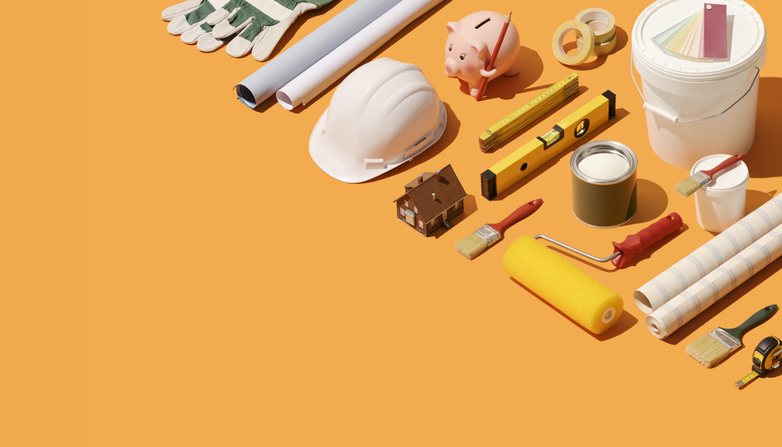All too often, homeowners take on ambitious DIY goals without knowing exactly what they’re getting into. While some choose the DIY route to save money on home repairs, others may simply want to be more hands-on around the house. For some projects, the risk of DIYing is well worth it, but certain projects can also come with some serious and often dangerous risks.
Why does it matter if I DIY my home repairs?
There are many reasons why your choice to DIY a project instead of calling a professional matters.
Risk of Injury. Approximately 27.8% of injuries at home are from punctures due to nails, screws, or bolts. Many dangers related to home DIY projects are due to falls, with millions of nonfatal falls occurring every year, often from ladders or stepladders.
Risk to your home. Certain home projects, when done incorrectly, can introduce further risk to your home. For example, poorly installed plumbing can lead to risks of water leaks and flooding, which can leave you on the hook for thousands of dollars of damage.
Legal risk. In some cases, you may be required to get a permit from the city to make a change to your home. Oftentimes those permits state that only a licensed professional can perform that change. In other cases, your mortgage lender may have language in your contract that prevents you from doing home repairs if you’re using money from your home insurance provider.
Resale value. Some home improvements must follow strict codes used by professional installers. If you don’t follow those codes correctly, this could cause your home to fail a home inspection or be otherwise unattractive to buyers in the future if you choose to sell.
Insurance. The fine print in your home insurance paperwork may potentially exclude coverage for DIY projects. That is to say that if you DIY the installation of a shower, then that shower breaks and leaks causing major water damage to the home, it’s possible that your insurer will deny coverage for that claim. It’s always best to talk to your home insurance agent directly before making any decisions to understand the specific details of your policy.
Read on for a list of seven of the most dangerous home DIY repairs to avoid, so you can make the right choice and hire the pros.
1. Electrical Repair
It’s crucial to know when to hire a professional if you need to make electrical home repairs.
When to Hire a Professional for Electrical Repairs
If you have no experience working with electricity, you should always get help from a professional electrician. You should never handle repairs made to homes with old knob and tube wiring yourself. It’s also essential to hire a professional for electrical repair if you’re dealing with live wires or to upgrade the entire home’s electrical system. In general, it’s prudent to count on the pros whenever you make any changes or fixes to any part of your home’s electrical system.
Dangers of DIY Electrical Repairs
Electrical issues can be dangerous. Just 200 amps of electricity is deadly to anyone. Not only do you run the risk of severe electrical shock, but mishandling electricity or making one mistake could also result in a dangerous house fire.
Cost Estimates of Professional Electrical Repair
- Your estimation of costs from a professional should include the labor rate, which is the bulk of the price. Skilled electricians will charge between $75 to $100 per hour or more, depending on demand and your location. New outlets cost approximately $225 each, while replacing a complete electrical panel may cost around $550 to more than $2,000.
- If you attempt to make electrical repairs DIY, you’ll likely pay more due to damage or incorrectly wiring something. Not only will you pay for your own time and materials, but you’ll end up paying the additional charges from your electrician to come out and make corrections, which will cost you several hundred more dollars.
2. Gas Line Repair
Dealing with natural gas is dangerous, so it’s always best to leave these home repairs to the experts.
When to Hire a Professional for Gas Line Repair
Contact a plumber right away if you smell gas in your home or if your gas heater, water heater, or gas appliances aren’t working. Most plumbers know how to locate gas leaks and repair them to correct the issue. Check to ensure that the plumber is certified to handle natural gas and gas lines.
Dangers of DIY Gas Line Repairs
Gas is a dangerous substance that can cause carbon monoxide poisoning. If inhaled for long periods, natural gas can be lethal. When exposed to a spark or flame, gas can also be explosive. Never attempt to repair a gas line yourself, or it may result in serious injuries.
Cost Estimates of Gas Line Repairs
- The cost to repair your gas line will vary depending on the severity of the issue. If you need to replace an entire line, it will cost more than simply fixing a leak.
- It could cost you much more to attempt to repair a gas line on your own. Not only could it cost you more time to figure out how to do things correctly, but when poorly done, a professional will have to fix the mistakes.
3. Plumbing Repairs
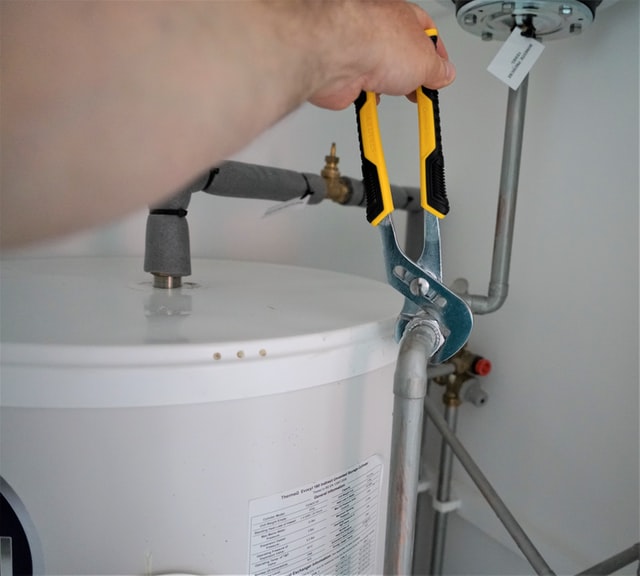
A licensed plumber should handle some plumbing issues to prevent floods and other damage to your home.
When to Hire a Professional for Plumbing Repairs
If you have leaky pipes, clogged drains that aren’t clearing, or issues with your hot water, it’s time to call the professionals. A trained, experienced plumber can handle a range of issues for you to prevent the problem from getting worse.
Dangers of DIY Plumbing Repair + Extra Costs
Attempting to repair your plumbing DIY, especially without having the proper knowledge, could cause the issue to become worse, leading to flooding and water damage. The cost of water damage could increase your price significantly, and you may not be eligible for reimbursement under your homeowner’s insurance policy if the damage was caused by your attempt to fix the issue yourself.
Cost Estimates of Plumbing Repairs
- On average, it should cost between $150 and $350 for most plumbing repairs. However, this cost could be higher if it’s an after-hours emergency or a significant problem that could take several days or hours to address. Regular inspections and plumbing maintenance by qualified professionals can help identify and address potential issues before they become major problems, preventing costly repairs down the line.
- When you attempt to repair plumbing DIY, it could cause serious leaks or other issues, which will cost you quite a lot more to get fixed. Water damage can wreak havoc on your flooring, home’s structure, furniture, and more.
4. Roof Repairs
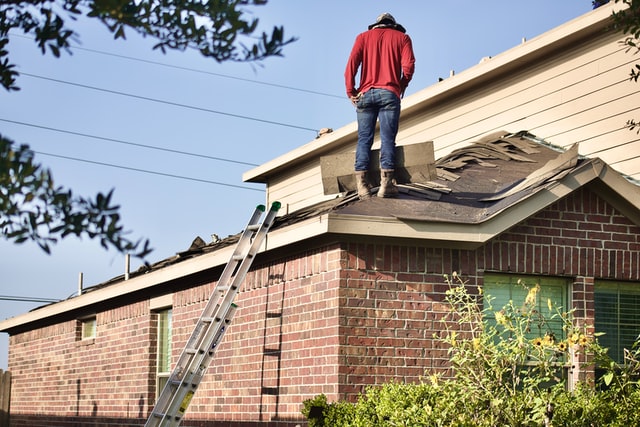
Roof damage is typical, but you should not do all repairs DIY.
When to Hire a Professional for Roof Repairs
If you’re preparing for a home inspection, it’s always best to consult with a professional roofing company to make any repairs beforehand. If sections of your roof are missing or severely damaged, flashing is missing, or you notice signs of curled shingles or mildew, it’s recommended that you hire a professional roofer.
Dangers of DIY Roof Repairs + Extra Costs
One of the most common injuries associated with a roof DIY home repair is falling from a ladder. You could also get seriously hurt if you attempt to climb on your roof. Not only will this cost you more in terms of the injury itself, but you could lose income due to missing time from work or may even damage your roof even further. Additionally, roofs can be unpredictable environments, with hidden dangers such as weak spots, hidden electrical wiring, or rotting supports. Professional roofers are trained to identify and handle such hazards, whereas inexperienced individuals may not be equipped to recognize and address them safely.
Cost Estimates of Roof Repairs
- The average roof repair costs between $348 and $1,186. Your price will depend on the severity of the damage and whether or not part of the roof needs to be replaced entirely.
- Attempting to fix your roof yourself could cost you more in terms of your safety. If you choose the wrong type of underlayment, shingle, or flashing, this will also cost you more in the long run.
5. Wall Demolition
Knocking down a wall can be a severe issue when you try to do it yourself.
When to Hire a Professional for Wall Demolition
Always hire a professional if you’re knocking down a load-bearing wall. You should also hire a pro if you’re demolishing an exterior wall or whenever you’re making significant renovations to your home.
Dangers of DIY Wall Demolition
Removing drywall creates dust that could irritate your eyes, nose, and throat. Load-bearing walls can also cause serious injury when done incorrectly and may cause the structure to collapse or cause your second or third floor to start sloping.
Cost Estimates of Wall Demolition Work
- Some contractors charge per foot for wall demolition work. If it’s a load-bearing wall, prepare to pay more for the demolition.
- It may cost you nothing to demolish a wall, but you’ll still need to pay for removing the materials and finishing work to make the demo job look attractive and professional. Hiring a pro to do it all will save you lots of money in the long run.
6. Asbestos Removal
Breathing in asbestos can cause many health problems, including asbestosis, and should be left to professionals.
What is Asbestos Removal?
Asbestos removal or abatement is the process of safely removing all asbestos from a property, which is commonly found in siding and plumbing insulation. It requires proper training and the use of personal protective equipment in order to prevent health issues. Look for a home inspector that can check for asbestos if you’re remodeling or selling your home.
Dangers of DIY Asbestos Removal
Disturbing or moving asbestos is extremely dangerous. If you try to remove it yourself, you could accidentally breathe this dangerous mineral into your lungs or leave some behind, causing a risk of health problems in the future.
Cost Estimates of Asbestos Removal Done by a Professional
- The national average for professional asbestos removal is $2,000, but an entire home filled with asbestos could cost as much as $20,000 to $30,000 to eradicate it.
- If you try to remove asbestos yourself, you not only run the risk of health problems later in life, but you could end up paying more when you discover asbestos in other areas of the home later. Before removing it, pay for a professional inspection to confirm all locations where this dangerous material is.
7. Tree Work

Cutting down a tree or tree limbs is dangerous work that professionals should usually perform.
When to Hire a Professional for Tree Work
Most people want to do their own tree work, especially when it’s as simple as trimming dead limbs. However, major tree work like cutting down a tall or rotting tree, is too dangerous to DIY and an experienced arborist should do it.
Dangers of DIY Tree Work
Common dangers associated with doing DIY tree work include injuries due to the improper handling of chainsaws, falls from ladders, or the tree falling onto people. Even a stray limb could fall on someone standing below. Electrocution from power lines is also common during DIY tree work.
Cost Estimation of Tree Work
- It can cost between $385 to $1,070 to cut down a tree, or around $10 to $14 per foot, with the average cost of around $630 per tree.
- You’ll need a quality chainsaw and sturdy ladder if you want to do tree work DIY, which will cost you. It could also cost you much more if the tree accidentally falls on your fence, a power line, the roof, or a neighbor’s home.
Other dangerous DIY projects
The projects mentioned above are just some of the downright dangerous projects that one can try at home, but the list continues. From giving your chimney a sweep to trying to change a loose ceiling fan, thousands of people end up in a hazardous situation when trying to make a home repair by themselves and without the help of a professional.
You could think that giving your chimney a sweep sounds like an easy spring cleaning type of project but think twice. Chimneys must allow harmful combustion gases to pass freely. Sweeping regularly removes soot, bird nests, cobwebs, and other obstructions. It also eliminates creosote, which helps to keep chimney fires at bay. A skilled chimney sweep will have the training and knowledge to spot issues that could lead to chimney fires or inefficient burning and will be able to alert you to these issues. Most chimney sweeps will check your chimney from the roof for any potential problems. Even if you have a general notion of what to look for, attempting this on your own could be difficult, if not a dangerous task.
Water damage is a huge problem for homeowners in the USA, affecting 14,000 people on a daily basis. Water damage can lead to hazards and complications if not handled properly. It can cause structural damage, mold growth, and damage to electrical systems. Attempting to repair water damage without professional expertise and equipment can be dangerous and ineffective. Professionals, such as water damage restoration experts, have the necessary knowledge and tools to identify the extent of the damage, extract water, dry affected areas, and handle appropriate repairs.
Other examples of unsafe projects that inexperienced homeowners can tackle include exterior paint jobs, decks, and porches (especially for this type of project, safety is key, both during and after the project). Handrails from staircases removal (which can put you at risk and also breaks the building code). Wall demolition; you can compromise from the house structure to plumbing and electrical wiring. Even removing paint from a house, which can look like a pretty easy task and a perfect DIY, can become a safety issue for homeowners if their homes were built before 1978 since there’s a really big chance there’s still lead-based paint, a highly poisonous component of paint in the past, somewhere on the walls or underneath the wallpaper.
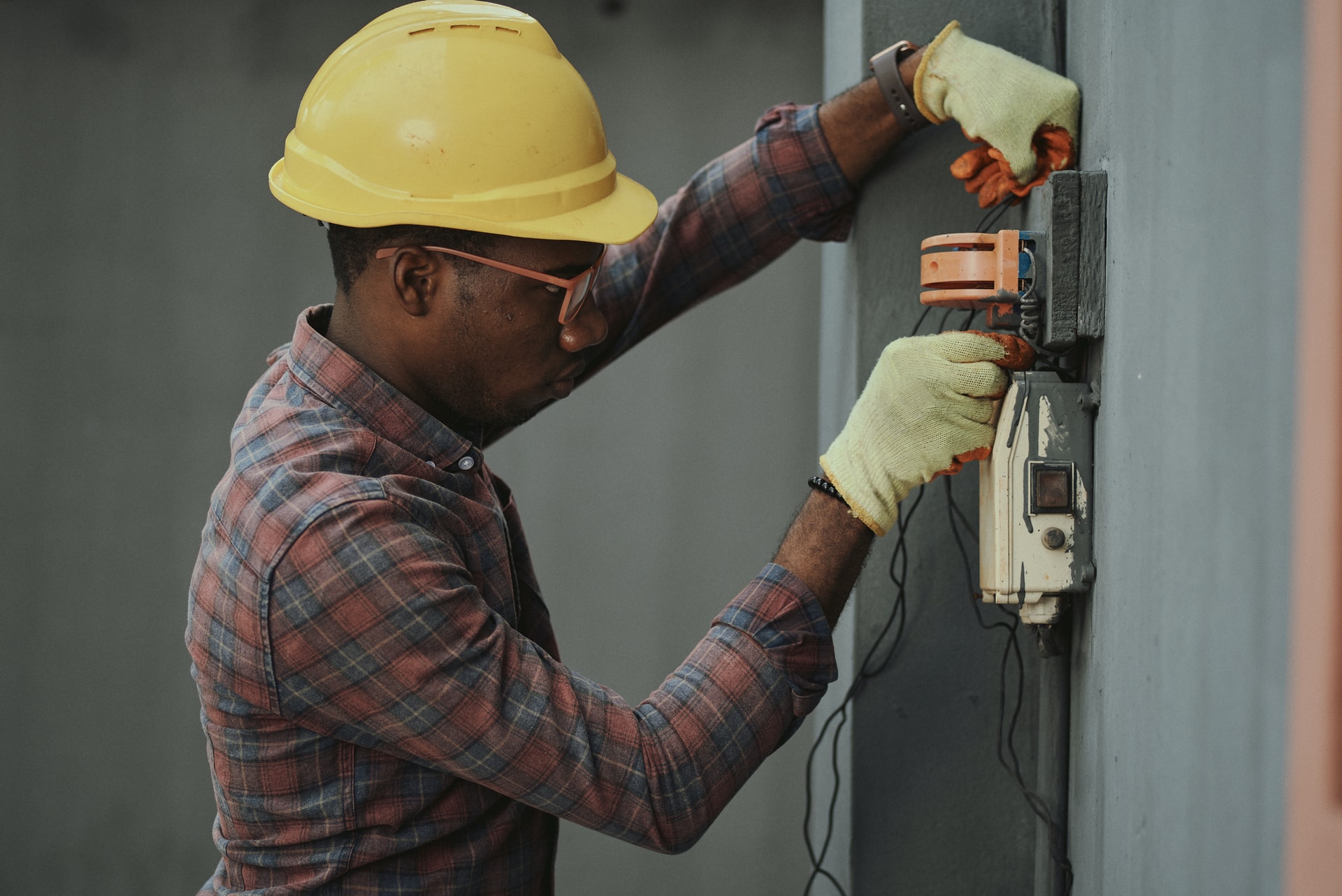
If you have a home warranty, you can avoid doing dangerous home projects by calling your warranty provider to request a service call. Your provider will send out an expert technician to assess the situation and determine what home repairs need to be done. This technician can perform the repairs for you, eliminating the risk of you getting injured while trying to do the repairs yourself.
Keep these seven dangerous home DIY repairs in mind the next time you need to work on your home. Certain issues should be left to the pros. Always hire the right professional to do the job by asking for referrals, background or reference checks, and choosing the correct expert. When you hire the right people, you’ll be able to get the repairs completed without the severe risks and extra costs.
